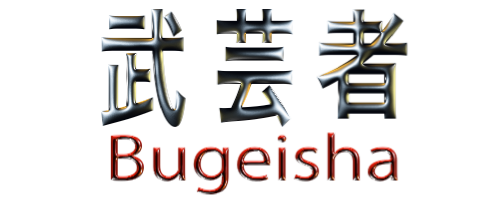Welcome to yet another post of Bugeisha blog.Today's topic is going to be Aikido(合気道) or "the way of unifying your energy".Aikido's founder is a man called Ueshiba Morihei and we could define it as an esoteric martial art system that avoids direct attacks from Tori(the defender we might call it).
Aikido was created by Morihei Ueshiba (植芝 盛平 Ueshiba Morihei, 14 December 1883–26 April 1969), referred to by some aikido practitioners as O sensei ("Great Teacher"). Ueshiba envisioned aikido not only as the synthesis of his martial training, but also an expression of his personal philosophy of universal peace and reconciliation. During Ueshiba's lifetime and continuing today, aikido has evolved from the Aiki that Ueshiba studied into a wide variety of expressions by martial artists throughout the world.
 Ueshiba developed aikido primarily during the late 1920s through the 1930s through the synthesis of the older martial arts that he had studies.The core martial art from which aikido derives is Daitou Ryu Aiki Jujutsu, which Ueshiba studied directly with Takeda Sokaku, the reviver of that art. Additionally, Ueshiba is known to have studied Tenjin Shinyou Ryu with Tozawa Tokusaburō in Tokyo in 1901, Gotoha Yagyu Shinkage Ryu under Nakai Masakatsu in Sakai from 1903 to 1908, and Judo with Kiyoichi Takagi (高木 喜代子 Takagi Kiyoichi, 1894–1972) in Tanabe in 1911.
Ueshiba developed aikido primarily during the late 1920s through the 1930s through the synthesis of the older martial arts that he had studies.The core martial art from which aikido derives is Daitou Ryu Aiki Jujutsu, which Ueshiba studied directly with Takeda Sokaku, the reviver of that art. Additionally, Ueshiba is known to have studied Tenjin Shinyou Ryu with Tozawa Tokusaburō in Tokyo in 1901, Gotoha Yagyu Shinkage Ryu under Nakai Masakatsu in Sakai from 1903 to 1908, and Judo with Kiyoichi Takagi (高木 喜代子 Takagi Kiyoichi, 1894–1972) in Tanabe in 1911.The art of Daitō-ryū is the primary technical influence on aikido. Along with empty-handed throwing and joint-locking techniques, Ueshiba incorporated training movements with weapons, such as those for the spear (yari), short staff (jō), and perhaps the bayonet (銃剣 jūken). However, aikido derives much of its technical structure from the art of swordsmanship (kenjutsu).
Ueshiba moved to Hokkaidō in 1912, and began studying under Takeda Sokaku in 1915. His official association with Daitō-ryū continued until 1937. However, during the latter part of that period, Ueshiba had already begun to distance himself from Takeda and the Daitō-ryū. At that time Ueshiba was referring to his martial art as "Aiki Budō". It is unclear exactly when Ueshiba began using the name "aikido", but it became the official name of the art in 1942 when the Greater Japan Martial Virtue Society (Dai Nippon Butoku Kai) was engaged in a government sponsored reorganization and centralization of Japanese martial arts.
Technique-wise on the empty hand combat Aikido has a variety of joint locks(wrist,elbow,shoulder,knee),throws and chokes.All techniques have a strong sense of absorbing the attack from the opponent through circular and linear movement called Tai Sabaki or Irimi Tenkan(enter and turn).Techniques like Irimi Nage,Kote Gaeshi,Ude Kime Nage,Ikkyo,Nikyo clearly depict that kind of motion.The main philosophy is to never attack and always accept,that's why we see that all techniques start with the opponent attacking first(wrist grab,elbow grap,sword-hand attack etc).Then the one defending moves out of the range of the attack causing the disruption of the balance and leaving an opening for an attack.
We also see that the variety of techniques are directly related to the weaponry Aikido uses,which is Jo,Ken and Tanto(middle staff,sword and knife).What that means that the motions or tai sabaki you use when you are empty handed are exactly the same when you hold a Jo or a bokken(wooden practice sword who is modeled after the japanese sword katana).From this point it's clear that Aikido has roots from a martial art that was used by the warrior classes which manly used weapons to fight and had empty handed combat like a last resort when they lost their weapons.Furthermore we see it clearly from the basic kamae(stance) of Aikido which is like holding a sword.
Next time I'm going to analyze one technique and see in depth what Aikido is all about.
Until Then
頑張ってください(Do your best please)
John





